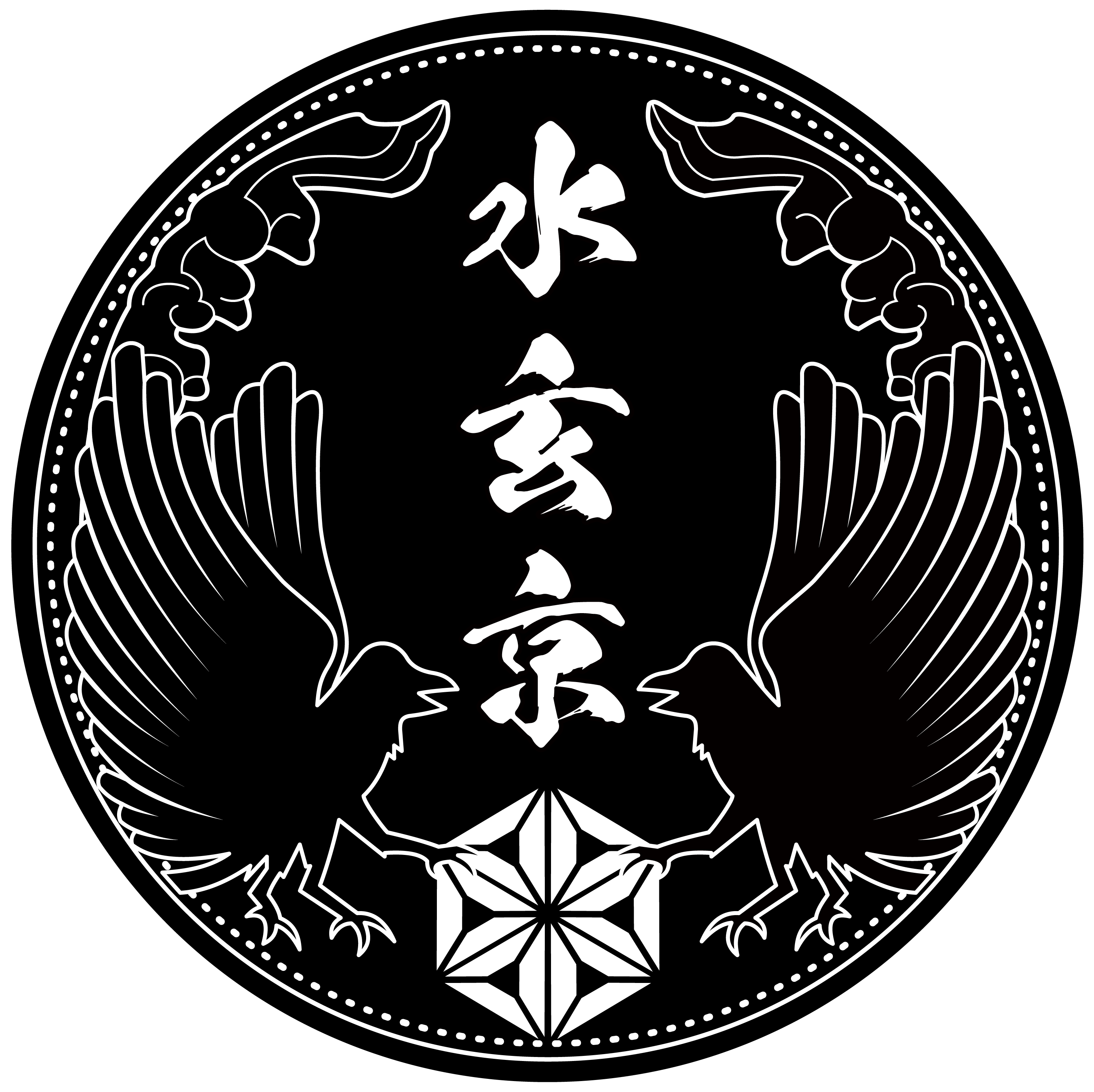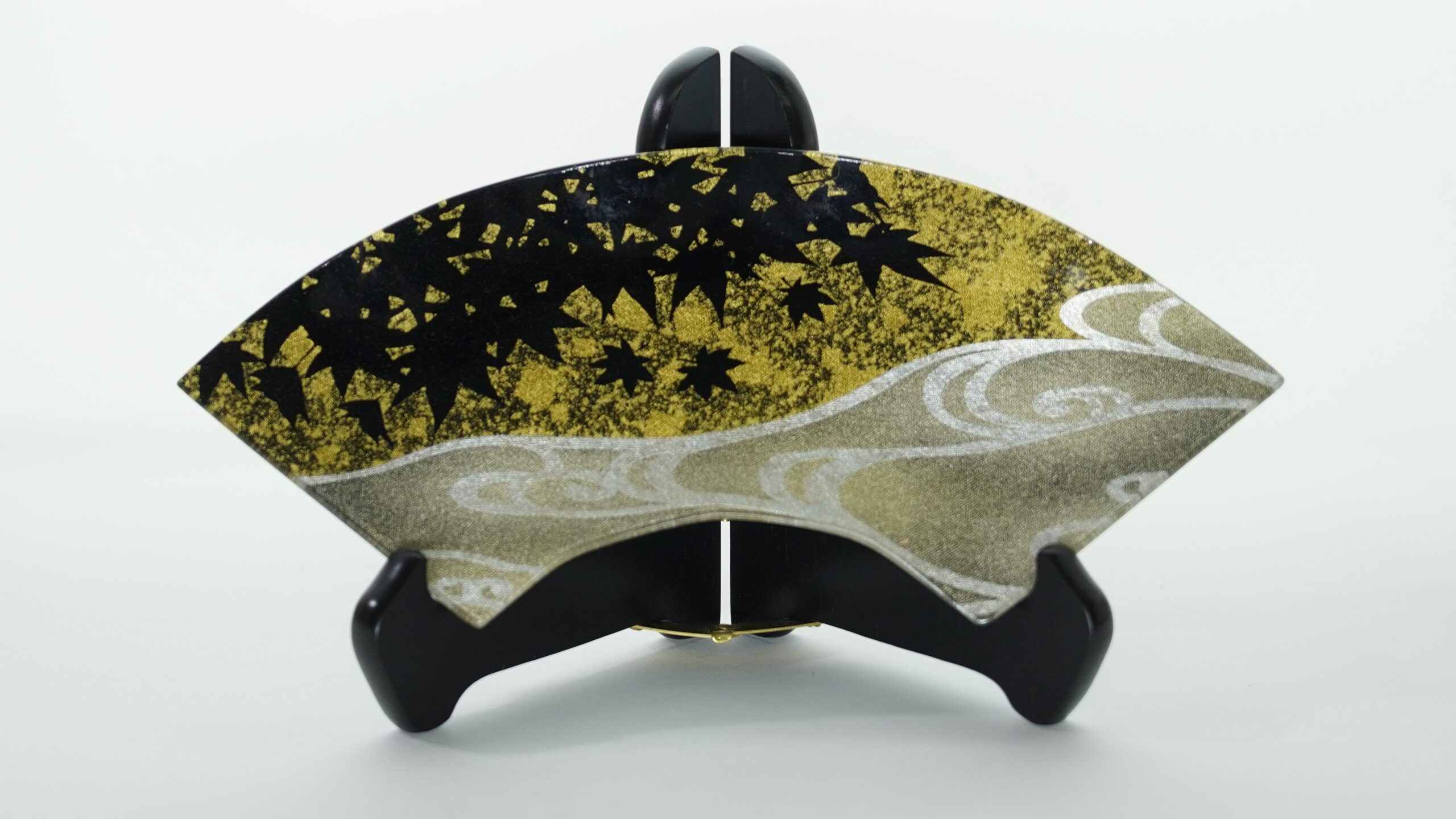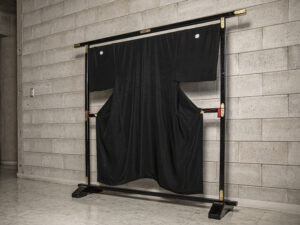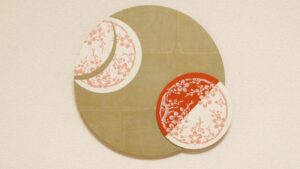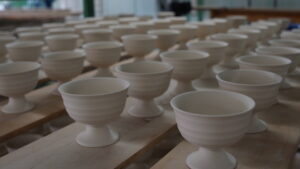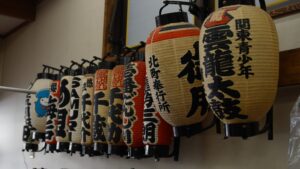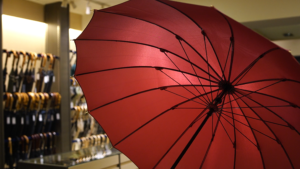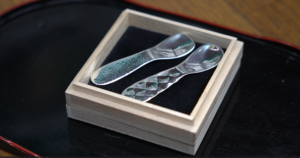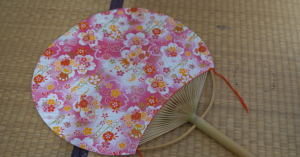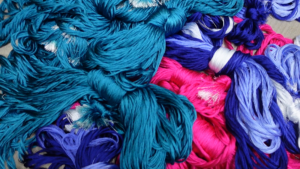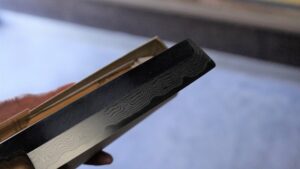Making Process of Kyo-Yuzen
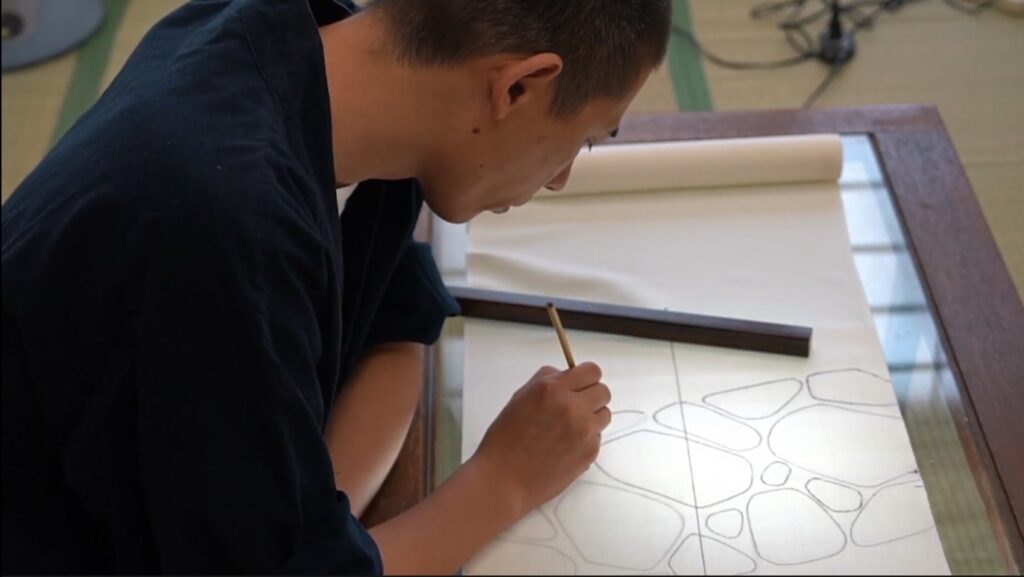
Design
Patterns and designs will be made. The fabric is canvas and you can see the dynamic design.
Glue plant
Place three-dimensional glue along the outline of the design to prevent adjacent colors from flowing into each other.
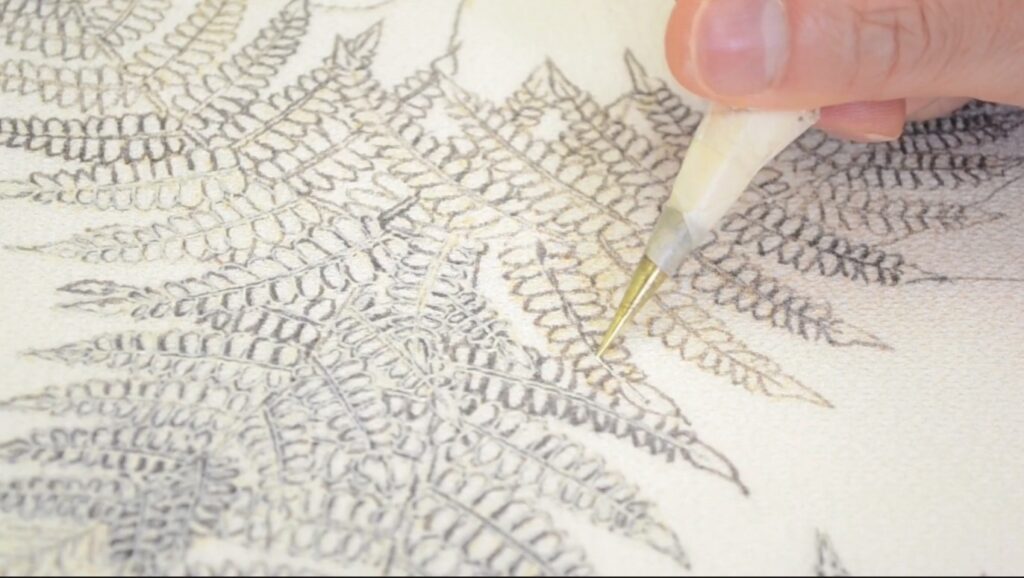
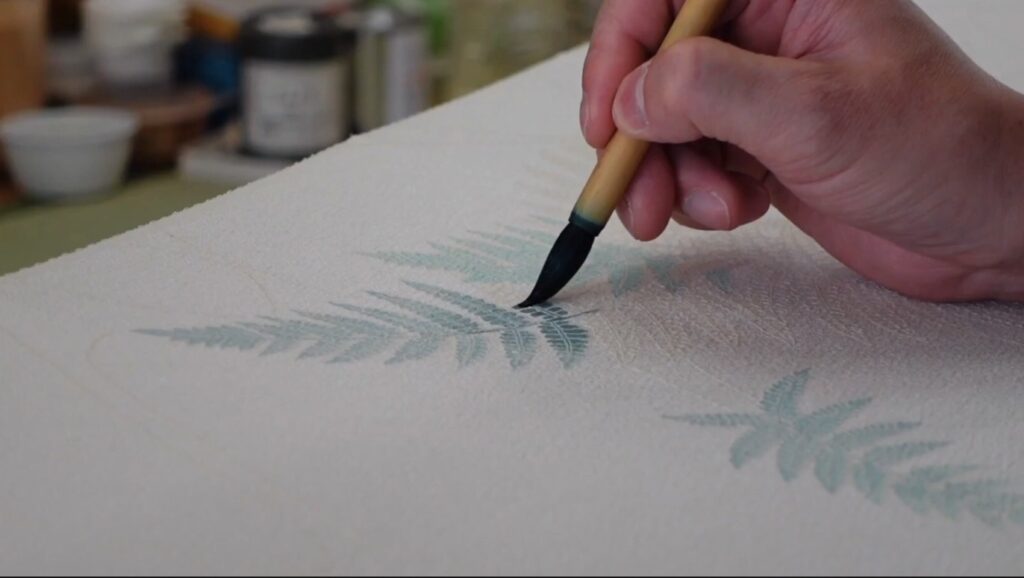
Color Insertion
A heater is used to heat the fabric from underneath, allowing the dye to dry. The process of coloring the fine patterns one by one is breathtaking.
Decoration
Decorative finishing is applied to the yuzen with gold or platinum leaf. Adding the leaf to an already brightly colored area will give it an even more vivid and dynamic impression.
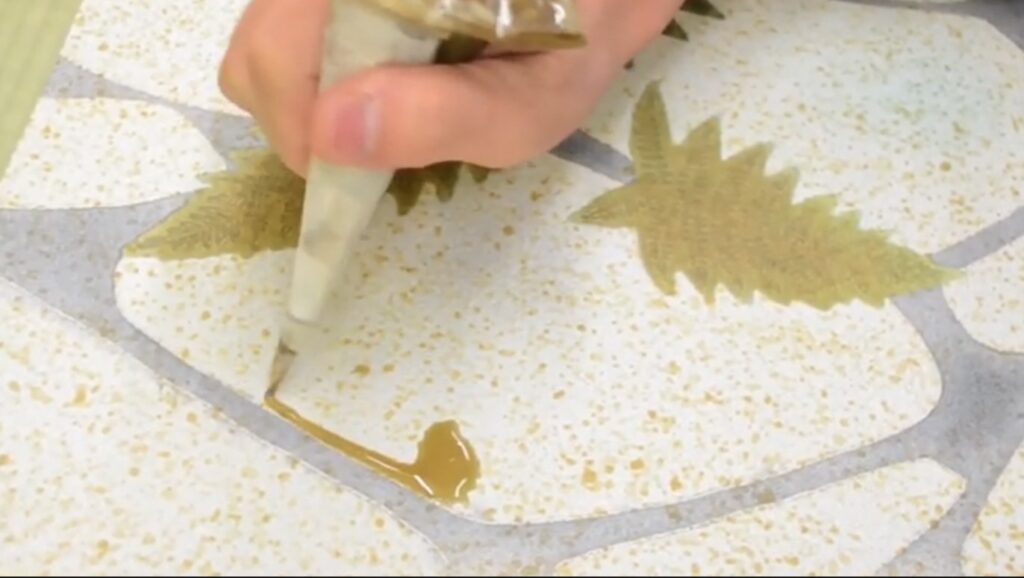
You can see the making process on Youtube
Kyoto, the birthplace of Yuzen dyeing
Yuzen-dyeing is a paste resist-dyeing technique and there are four representative yuzen dyeing processes in Japan. Kyo Yuzen in Kyoto, Kaga Yuzen in Kanazawa, Edo Yuzen in Tokyo and Tokamachi Yuzen in Niigata. It is said that Kyo Yuzen is the origin of all Yuzen dyeing. Kyo Yuzen is designated as a traditional craft by the Ministry of Economy, Trade and Industry, and has become a craft that represents not only Japan but also the world. The characteristic of Kyo Yuzen, which is popular worldwide as a dyed textile, is the beautiful colored Yuzen patterns. There are two main types of traditional yuzen dyeing techniques: hand-painted yuzen, in which dyeing is done by craftsmen, and “kata-yuzen”, in which paper stencils are used for dyeing. Kaga yuzen has a basic color called “Kaga Gosai” (five colors of Kaga), which gives their regular color, while Kyo yuzen has no basic color, and each craftsman freely expands their creativity and designs. Therefore, another characteristic of Kyo-yuzen is that it is possible to enjoy the colors that are created by craftsmen’s creativity and experience.
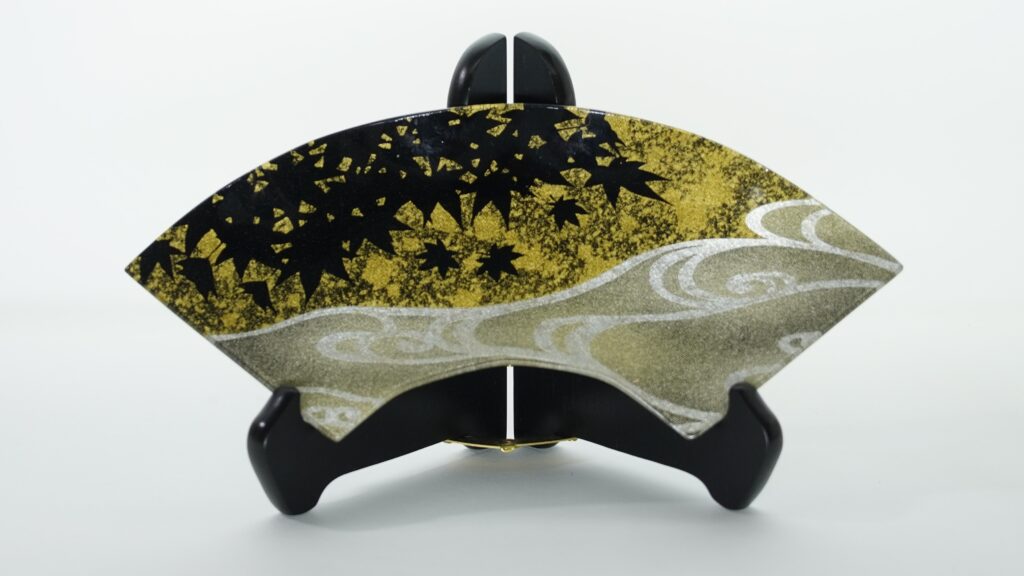
Was Kyo-Yuzen born because of the law for the prohibition of luxury?
Kyo Yuzen was born in the Edo period. Its origins can be traced to a famous fan painter Miyazaki Yuzenzai, who was active in Kyoto. During the Edo period (1603-1868), a law prohibiting extravagance was issued, calling on people to stop being extravagance and to be thrifty. After this new law, the production of luxurious kimonos such as gilded, tie-dyed, and embroidered kimonos were banned. In order to overcome this circumstance, “Kyo Yuzen,” colorful and beautiful dyed kimono were started to produce. Nowadays, in addition to the dyeing techniques, techniques that were forbidden in the Edo period are also used, resulting in more luxurious and gorgeous kimonos.
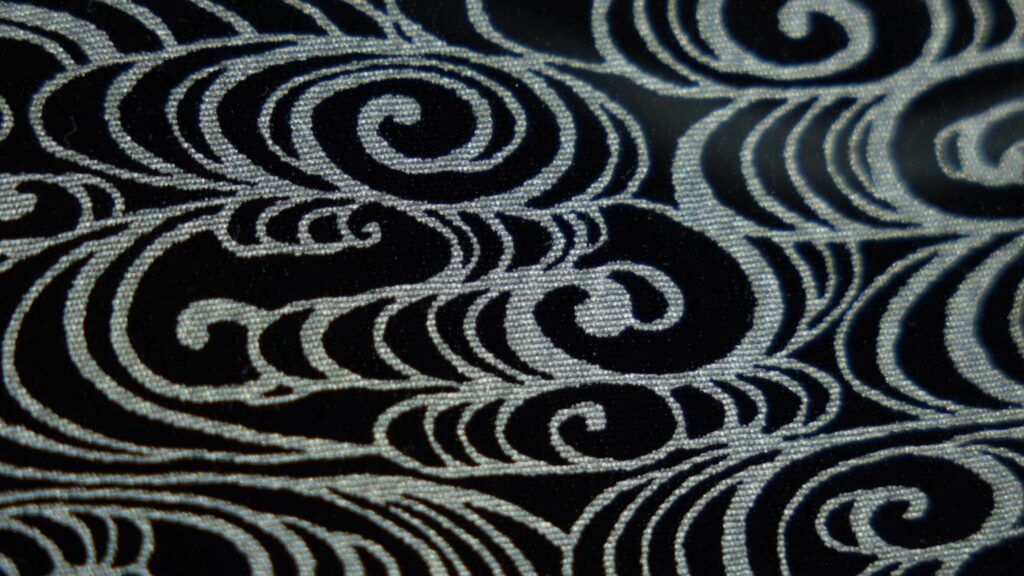
Kyo-Yuzen Technique can be Used for Plates!
When you hear the word of “Kyo-Yuzen,” the first thing that comes to your mind must be a kimono. The kimono industry is facing a reality of declining demand as the number of people who wear kimonos as their everyday clothes has been drastically decreasing due to changes in the Japanese lifestyle. In order to address this negative situation, products that reflect the techniques of Kyo-Yuzen have been created. One example is a decorative plate produced by Huduru Kogei. The colors created by combining the gold leaf process used in Kyo-Yuzen with glass attracts large number of people. When you invite your guest to your home, you can place sweets on the plate to entertain them. The creation of Kyo-Yuzen can be divided into 20 processes, and each process has its own skillful craftsmanship. We have stocked the products of Kyo-Yuzen at Suigenkyo online store and you can now feel the craftsman’s skill. Please take a look at our craftsmen’s skills.
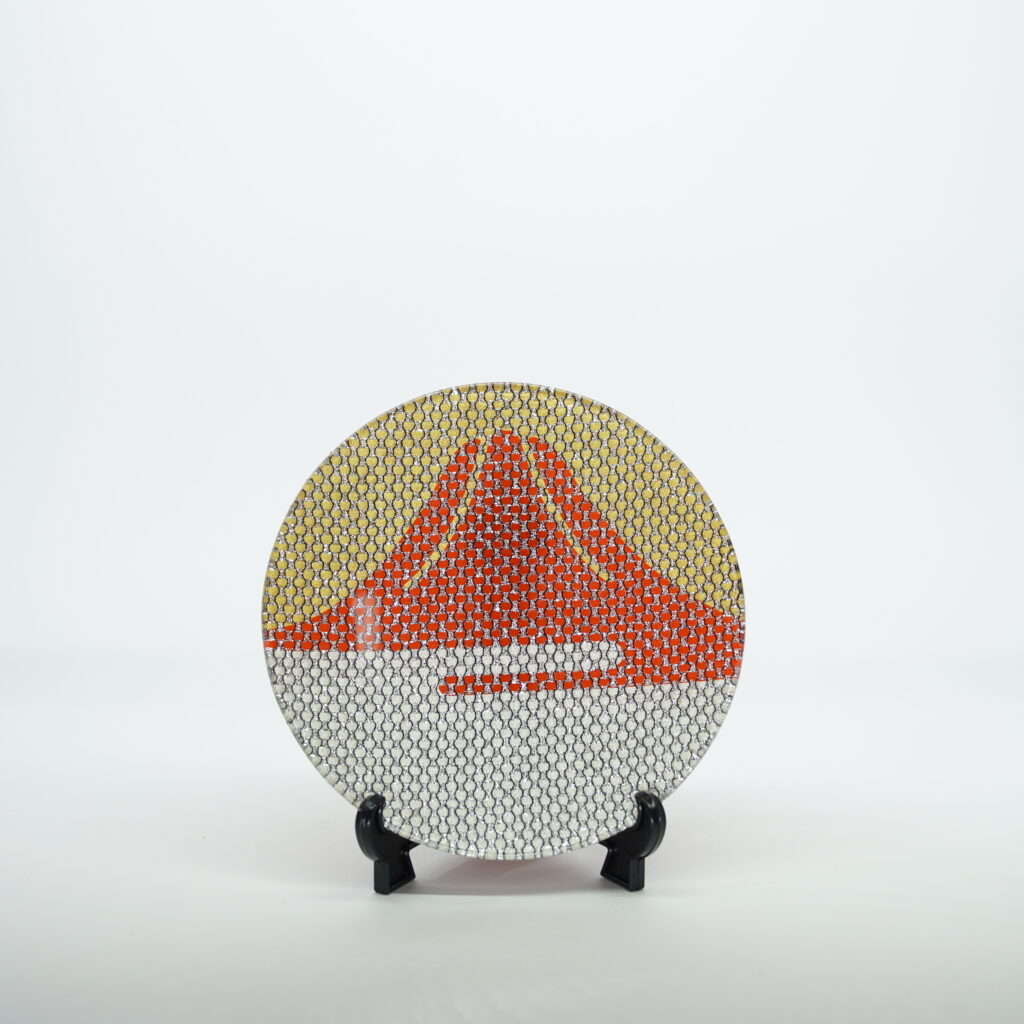
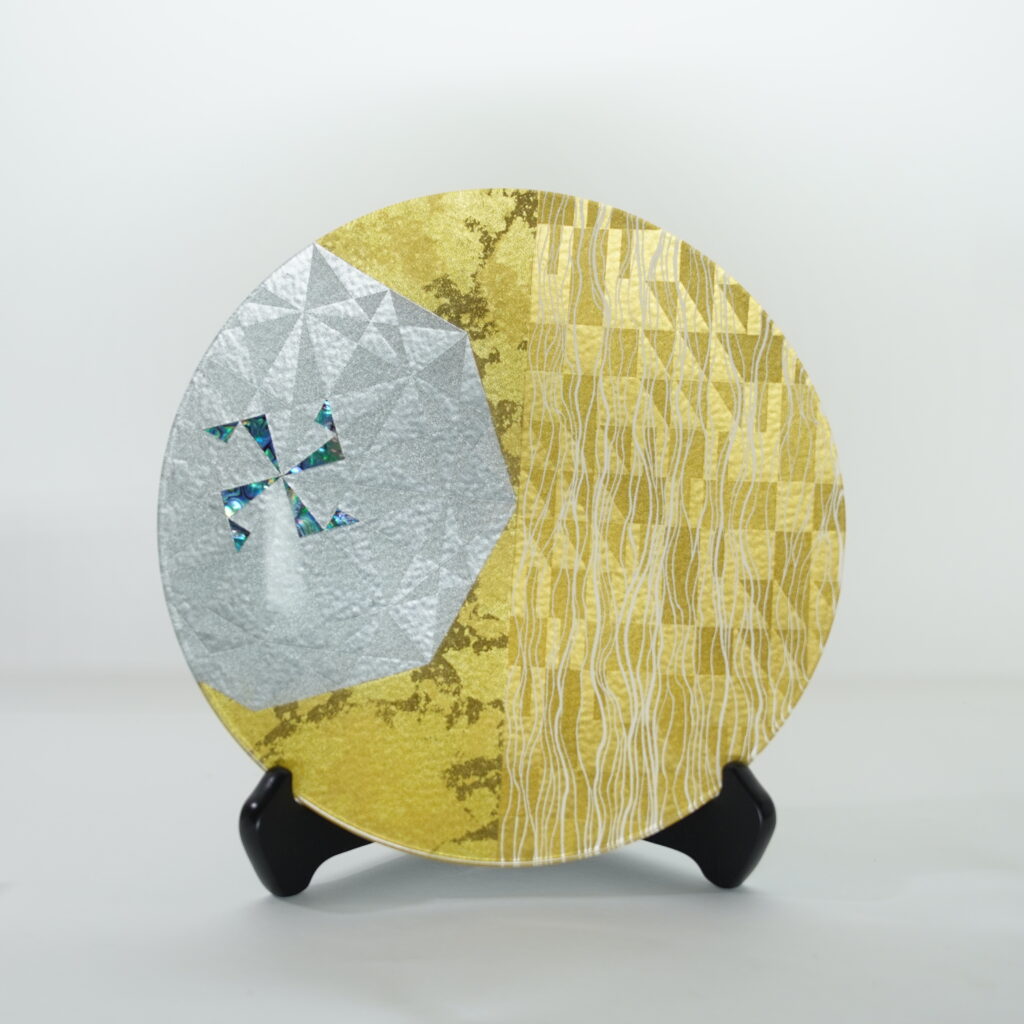
Kyo-Yuzen” has a long history, and the technique is still being passed down today. The technique, which has been handed down for a long time, is about to undergo a new change. Why don’t you incorporate Japanese culture into a part of your life?
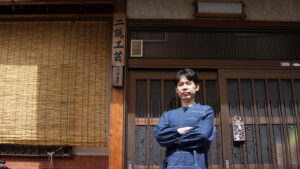
Suigenkyo Online Store
We offer a wide range of products including tableware, accessories, and interior design.
Suigenkyo YouTube
You can see the making process of the products listed on Suigenkyo Online Store.
